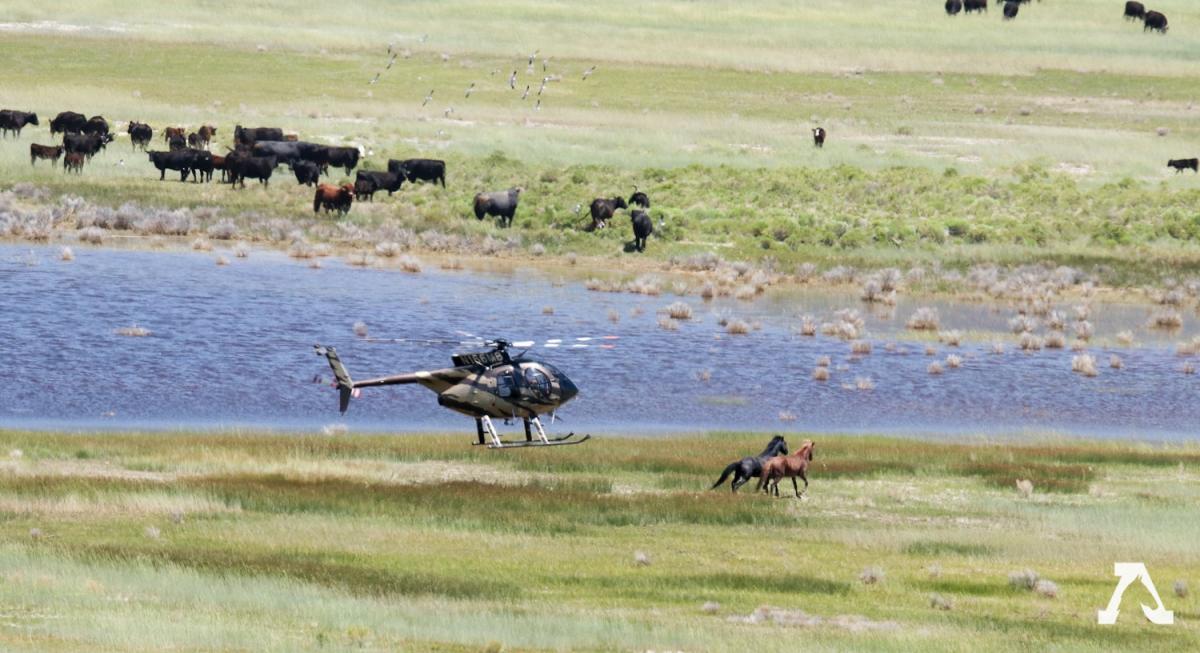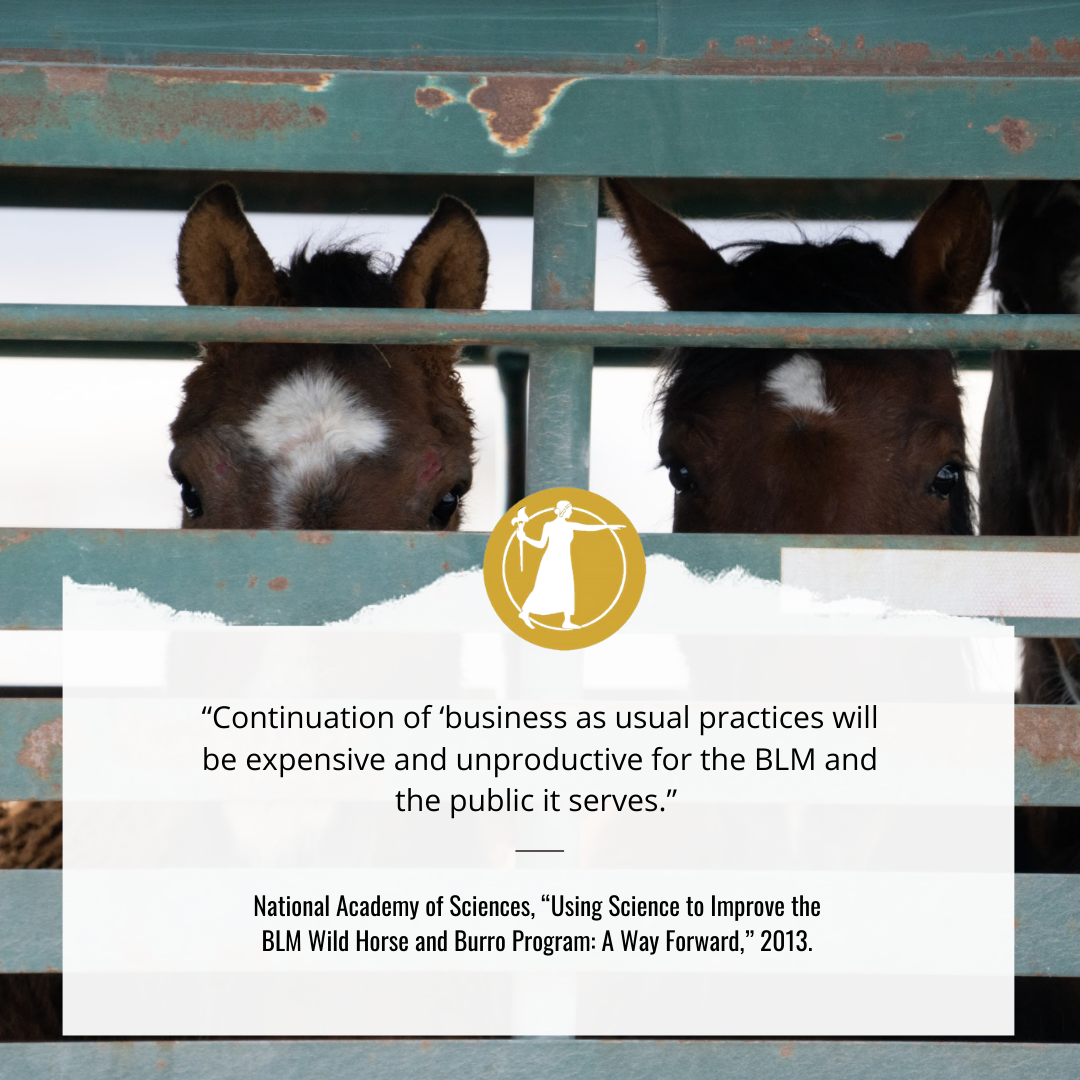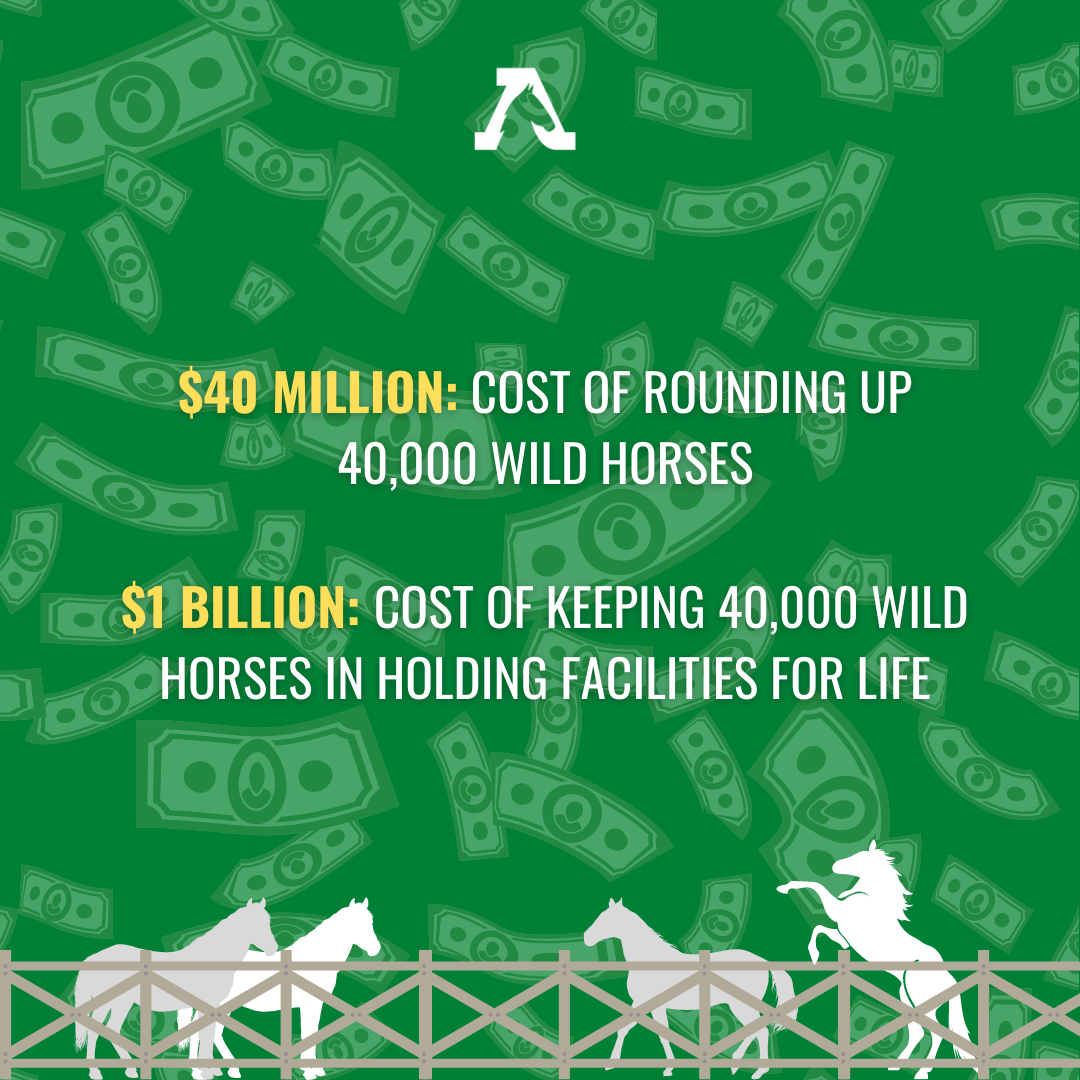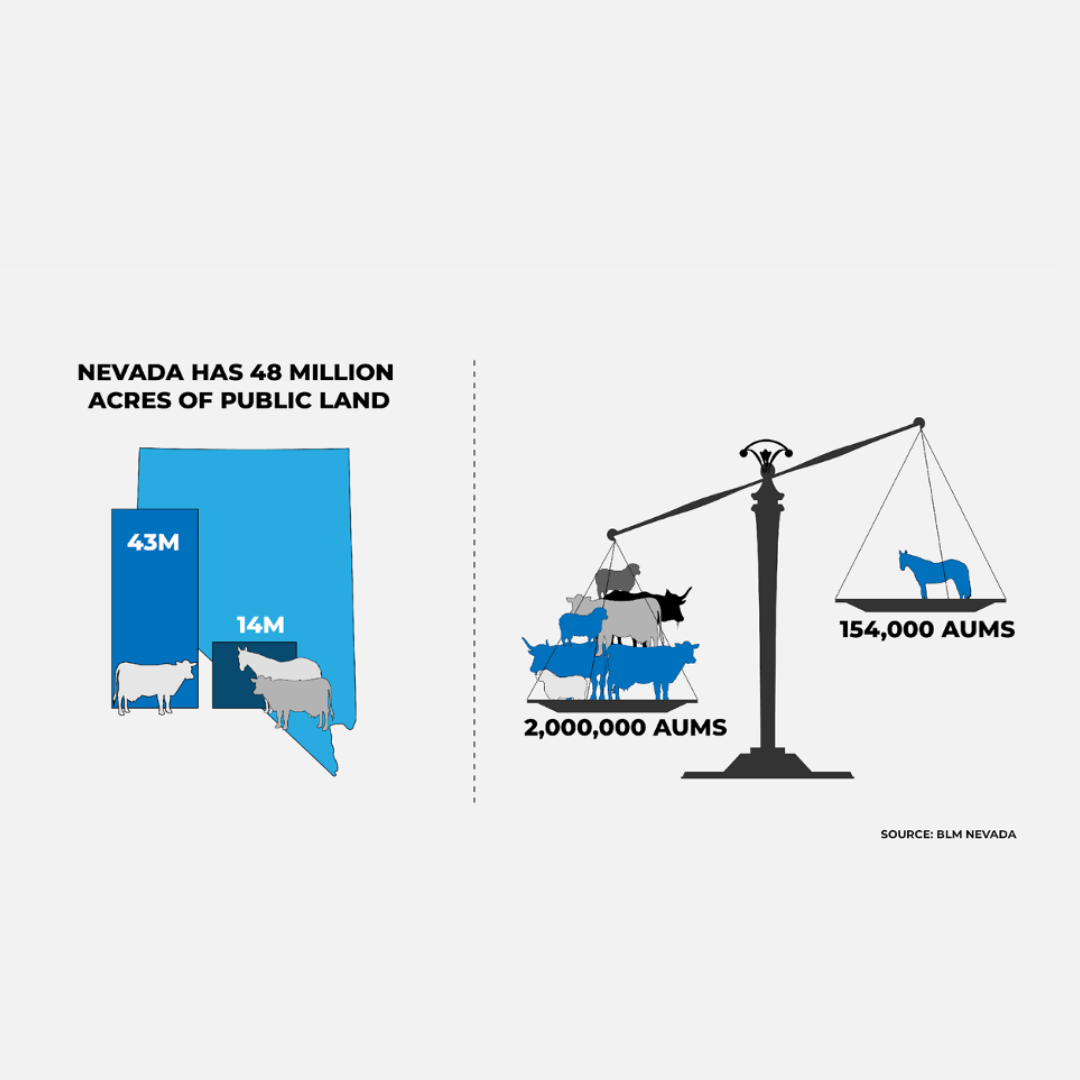Two Nevada State Senators -- one a cattleman, the other a wildlife trapper -- have teamed up with a coalition of commercial interests to push for the removal of 85 percent of Nevada’s iconic wild horse and burro population. They want the lands where the wild horses roam for cattle grazing, even though cattle grazed on Nevada public land produces less than .1% of America's beef supply.
They’re asking the Legislature to pass SJR3, a resolution calling on Congress to fund massive helicopter roundups over the next six years to remove as many as 43,000 wild horses and burros from public lands in Nevada. This would decimate wild populations, leaving behind as few as 7,100 wild horses and under 500 burros on 14 million acres of public land in the state.
Worse, they want you - the American taxpayer - to pay more than $1 billion for the plan. And they’re deceiving Nevada lawmakers to get what they want.
Like the bald eagle, wild horses and burros are protected under federal law as important symbols for our nation. 86% of Nevadans want these iconic animals protected and humanely managed on our public lands. SJR 3 places special interests above the public interest and must be rejected.






